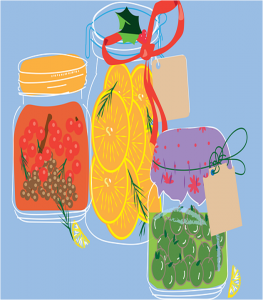Making candles is a rewarding and satisfying activity. Candles can be useful for many occasions and are a great way to keep your home decorated.
Candle making can be fun and interesting, and you will soon discover the process. There are also many benefits to doing this. How can you make candles? Where can I find supplies for candle making? These are the following items that are required for candle making:
Candle Wax
Wax is the most important ingredient for candle making. It prevents the wicks from burning and melting, and then evaporates in the air.
Candle Wicks
Candle wax and candle wicking are equally important. Candles wouldn’t be lit without them. Once you light the candle, it will melt. As the flame burns, the wax will vapourise and eventually, the wick will fall apart.
There are many types available in wicks. The type of candle you have and the size of your wick will determine which size and what type of wick you need. This table will help to choose the right size and type of wick.
Some wicks have been pre-waxed. They have been dipped in honey wax or paraffin wax. These wicks are suitable for small jar candles and tea lights. Because they are more rigid than other wick holders, they are ideal for them.
Candle Molds
Candle molds should be included in your supply of candle-making material. With their many shapes, you can create interesting shapes with your candles.
There are three types: silicone, plastic and metal candle molds. Metal will give you the best finish, but silicone and plastic can be used to create your designs.
Certain waxes may not be suitable for pouring in molds. Paraffin wax is the best choice. You can use paraffin/soy mixture or beeswax if you prefer.
Gel waxes and pure soy are not recommended. A stronger, more stable wax is needed that can hold its weight.
Candle Jars
Aussie Candle Supplies also sells candle-making containers. These jars are a great alternative to traditional freestanding candles, and they look great. Candle making can be done with any type of wax.
It doesn’t have to be a jar. However, decorative candle tins are just as elegant and luxurious.
Jar candles are not easy to make. Because candle wax contracts when it cools, this is why jar candles can be difficult to make. This can be made more apparent by using a transparent jar.
You will need to purchase supplies for making candles. Make sure you choose a jar that has a smooth and polished interior. Frosted jars are also available to cover any imperfections.
Double Boiler
Double boilers are the best way to melt wax. A double boiler is a metal pan with water inside. A metal or heatproof bowl can be placed on top. The bowl will heat slowly while the water in the saucepan boils.
Instructions for Candle Making
1. Heat, processing, mixing and pouring waxes
Heat the candle wax in a pouring pitcher or wax heater until it is completely liquefied. It is fine to heat the candle wax at 200 degrees F. It is best to add the colour or additives to the wax at around 190°F. This will ensure that the wax remains uniform in temperature and that it is thoroughly blended. Let the wax cool down on your heater and allow it to cool to the recommended pouring temperature. It is best to add the fragrance right before pouring.
This will prevent the wax from being heated for too long, which can cause some fragrance loss. Before pouring the fragrance into containers or molds, it is important to stir the mixture again. It is crucial to pour at the right temperature. Too hot can cause shrinkage, which could lead to multiple repours. To the contrary, too cold can cause air bubbles, blemishes and other defects to your candle’s finish. It can be very difficult to remove the candle from the mold if you pour at an incorrect temperature.
After you’ve completed the first pour, it is not finished. You may need to repour the wax as it has a tendency to shrink once it cools. Some container candle wax blends may not require a repour. Most waxes require a top off or repour. You should save enough wax from your original batch to ensure that the colour of the top off matches the first pour.
Container waxes should be allowed to solidify completely before repouring. This will ensure that you only pour one top off. It may take some experimentation to get the wax to solidify in votive and pillar candles, but it is worth waiting an hour before you repour. If you wait too long, the wax can shrink and pull away from your mold. This is a problem when you top off your candle. Molten wax from the top will run down the sides, causing undesirable wax streaks.
2. Preparations for mold or containers
We recommend that you heat your containers or molds before you start making container candles, votives and/or pillar candles. The surface of your candle may be affected by a cold container or mold. You can heat them to achieve a smooth, clean finish for your candle. It is also recommended that you use a silicone mold release after every 4 to 5 pours. This will make it easy to get your candle out.
3. Cooling
You will need to decide on the cooling method depending on the wax formula and the finish you want to achieve with your finished candle. You can cool candles at room temperature, or force cool them using circulating air, refrigeration or cold baths. To minimise shrinkage, it is best to let container candles cool at room temperature if you make them. Container candles that are force cooled often result in separation of the wax and glass, which can lead to undesirable wet spots.
Also Read the Dimensional Analysis- Principle, Example, Application, and Limitations




